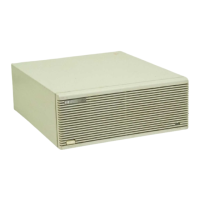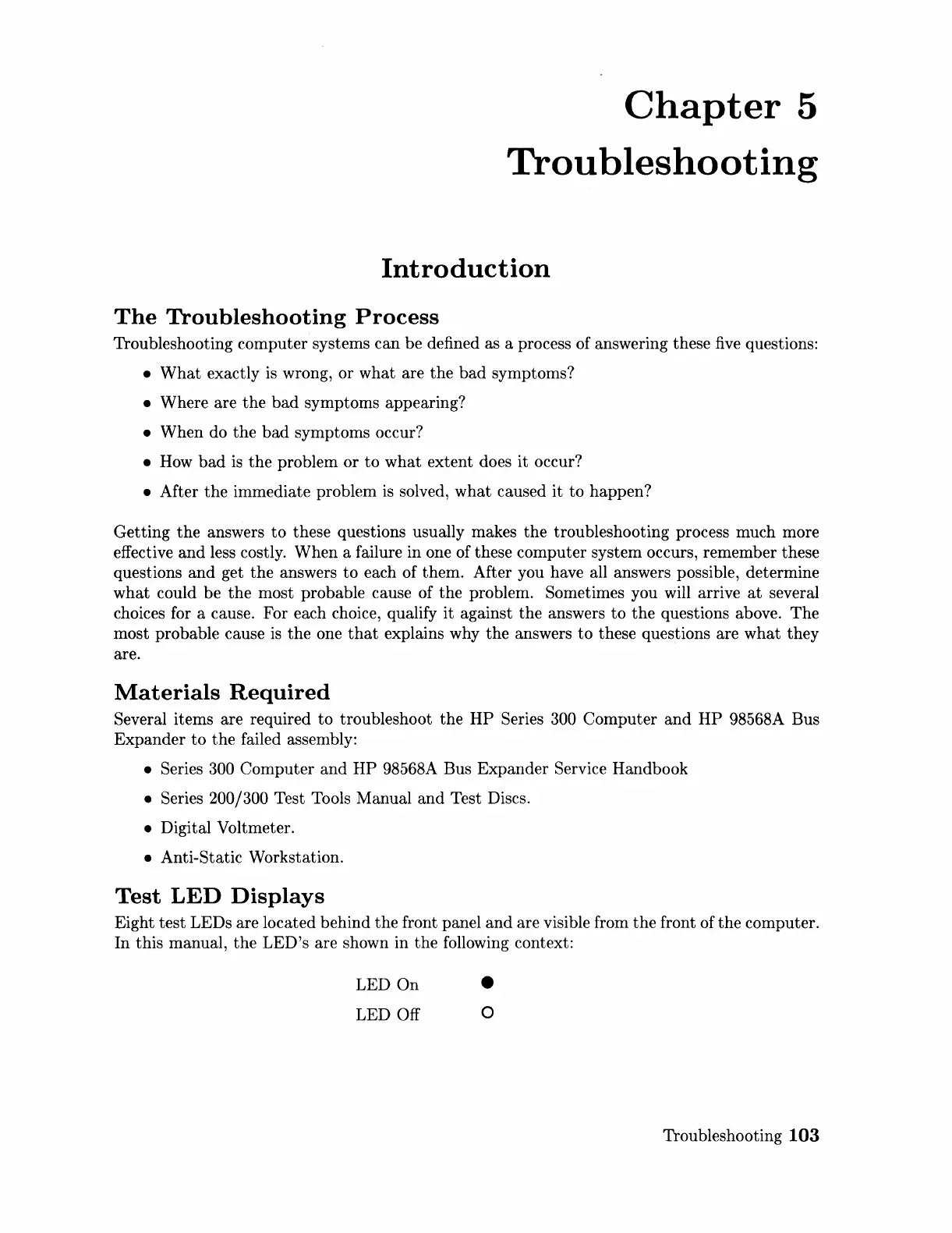Chapter
5
Troubleshooting
Introduction
The
Troubleshooting
Process
Troubleshooting c.omputer systems
c.an
be defined as a proc.ess of answering these
five
questions:
•
What
exac.tly
is
wrong, or what are the
bad
symptoms?
• Where are the
bad
symptoms appearing?
• When do the
bad
symptoms
oc.c.ur?
•
How
bad
is
the problem or to what extent does it
oc.c.ur?
• After the immediate problem
is
solved,
what
c.aused it to happen?
Getting the answers
to
these questions usually makes the troubleshooting proc.ess
muc.h
more
effec.tive
and
less
c.ostly.
When a failure in one of these c.omputer system
oc.c.urs,
remember these
questions
and
get the answers
to
eac.h
of them. After you have all answers possible, determine
what
c.ould
be
the
most probable
c.ause
of the problem. Sometimes you will arrive
at
several
c.hoic.es
for a
c.ause.
For
eac.h
c.hoic.e,
qualify
it
against the answers to
the
questions above. The
most probable
c.ause
is
the one
that
explains why the answers to these questions are
what
they
are.
Materials
Required
Several items are required to troubleshoot the
HP
Series 300 Computer
and
HP
98568A Bus
Expander
to
the failed assembly:
• Series 300 Computer
and
HP
98568A Bus Expander Servic.e Handbook
• Series 200/300 Test Tools Manual
and
Test
Disc.s.
• Digital Voltmeter.
• Anti-Static. Workstation.
Test
LED
Displays
Eight
test
LEDs are loc.ated behind the front panel
and
are visible from the front of the c.omputer.
In this manual, the LED's are shown in the following c.ontext:
LED On •
LED Off 0
Troubleshooting
103
Artisan Technology Group - Quality Instrumentation ... Guaranteed | (888) 88-SOURCE | www.artisantg.com

